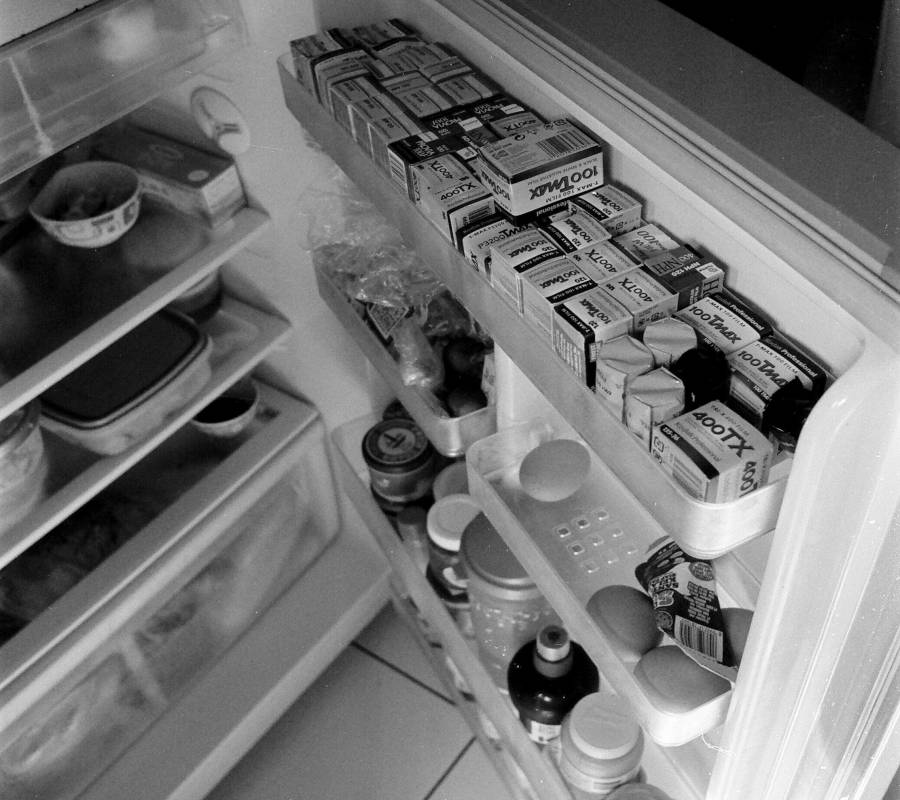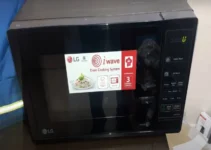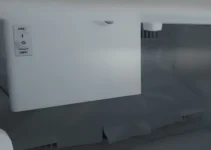What is Freon? When and how should you remove freon from your fridge?

Often, they could go by the names HFCs, CFCs, or HCFCs, depending on the constituent of the chemical compound with which they are mixed.
In any case, they are chemical compounds consisting mainly of chlorine, fluorine, and carbon.
In fridges, Freon is a cooling agent. It speeds up the refrigeration process and helps to preserve and cool the fridge.
However, it leaks at times. Being a chemical component with consumption-toxic properties, it is unsuitable for human consumption.
Tools Needed For Freon Removal
Here is a list of essentials needed to complete the Freon removal task on a fridge. It is followed by using each tool while removing Freon from a fridge.
- Tank (a gas cylinder)
- Evacuation machine
- Hoses
- Manifold gauge
- Hook
- Pliers
Tank (Gas Cylinder)
Freon mustn’t be released directly into the air considering basic health safety and environmental standards. Instead, a gas cylinder is needed to contain extracted freon.
Hence, the cylinder should be in good condition, not a leaking cylinder.
Evacuation Machine
It is a machine used in extracting the content of appliances containing refrigerants. Often, there is a need to extract the refrigerant content of appliances before they are disposed of.
Hence, an evacuation machine is designed to safely and effectively carry out the clearing process.
Hoses
It is quite a standard tool used when removing freon from a fridge. It is a pipe-like material of varying lengths and diameters used in transferring liquid and gaseous content from one medium to the other.
You get to see them in use in fuel and gas stations always.
Manifold Gauge
It is an instrument designed to measure the pressure from a liquid or gaseous medium. It is a vital instrument in freon extraction as it determines if or not there is any freon content left in a medium.
Hook
It is an integral part of the manifold gauge. It is instrumental to the measurement function of the gauging instrument.
Plier
A plier is needed to apply pressure to the fridge outlet where the freon will be extracted.
Steps To Removing Freon From The Fridge
Removing freon from the fridge could be a little tricky, but it is achievable.
Step 1: Connect The Sevices Perfectly
The connection part often makes the Freon removal process tricky for novices. If you fall into this category, you can succeed at it.
All you need to do is to set up the manifold gauge and attach your hoses to it according to where it belongs.
In the same vein, ensure they are fitted correctly and appropriately. To get this right, you must match each hose end to the right outlets.
The fitting procession is as follows:
- Connect the blue hose to the blue manifold gauge.
- Connect the yellow hose to the outlet directly under the hook.
- Then, the red hose goes to the red outlet on the evacuation machine.
- The other side of the red hose goes to the red valve on the tank.
- The other end of the yellow line is attached to the blue valve evacuation machine.
- The other side of the blue line is attached to the evacuation pliers.
Also, avoid hoses with “low loss” or “anti-blowback” type fittings. Often, larger diameter hoses can help you recover more quickly and are even faster when you employ the shortest hoses.
Note
Ensure all valves are fitted to the hose (especially the main fond).

Step 2: Connect To A Source Of Electricity
Now that the devices have been put together, the next step is to power them on.
You might want to connect the evacuation machine to a power source and switch it on or use it directly if it has a valuable renewable energy source.
Step 3: Connect Setup To The Fridge
At the rear end of the fridge, look for a copper piece that looks short and cut off (that is how it was designed), and fasten it with the plier such that the copper piece is in the center of the plier (which usually has a needle inside).
Once the needle penetrates the copper piece, slowly open up the blue-colored knob of the manifold gauge and watch the pressure go down.
Note
The evacuation machine is designed to propel freon removal from the fridge. Hence, the pressure from the machine will do the job.
Step 4: Monitor The Removal Rate
You monitor the removal rate with the manifold gauge when removing a freon. It is pretty interesting to see how this setup works.
Freon is drawn out of the fridge as the gauge indicator goes down. The lower the blue manifold gauge, the lesser the pressure:, the lower the pressure, the lesser the Freon constituent in the fridge.
Once the gauge reaches zero or below, please turn off the valve and remove the pliers, then turn off the blue valves on the evacuation machine before finally switching it off.
Afterward, turn off the valve connecting the tank. Then, the Freon is extracted and safely stored in the tank (gas cylinder).
Note
The manifold gauge is designed to help you determine at what rate the Freon content is being removed. Therefore, it is your indicator tool.
Ensuring Safety During The Process
Technical expertise requires you to research the government’s policies to regulate the removal procedure.
The crucial point is that you cannot just cut or open the cables and allow the Freon to escape into the atmosphere.
Ensure a recovery cylinder is available, and it has a complete vacuum. It is also essential to have no leakage in any of the valves connecting the hoses to every component.
Finally, make sure you dispose of the Freon properly.
Should You Remove Freon Yourself?
For safety reasons, individuals are prevented from removing freon themselves. If it is not done correctly, it could trigger allergies and medical emergencies in people who inhale it.
It has also been reported that the release of freon’s gaseous component has contributed to the depletion of the ozone layer over the years.
By implication, freon removal is a global warming issue. We can see why only professionals are licensed to carry out the operation.
However, you can look for the governmental stand on the matter in your local environment and see if you qualify to remove freon from your fridge.
Conclusion
You would agree that a fridge with a controlled Freon constituent keeps users several steps closer to good health.
Therefore, learning how it is done and taking the right actions for practice is a time-worthy venture. Now, you are indeed equipped to make your fridge safer.
This guide is pretty straightforward. All you need do is follow all the steps, and the task is done.
If you do not meet the required qualification to remove Freon from a fridge, it is advised that you hire certified personnel to help you get the job done.



